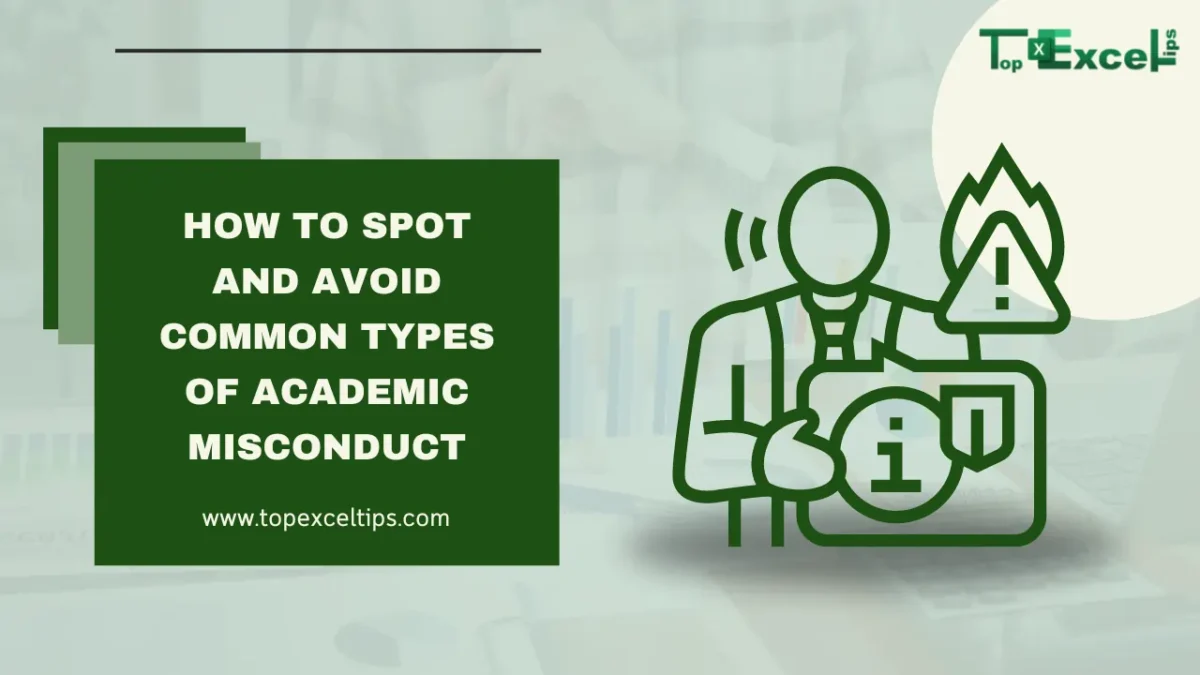
Are you an educator looking for tips on how to recognize academic dishonesty? Or, are you a student willing to learn effective practices to avoid academic misconduct? If yes, you have come to the right place. This article is specially crafted to educate you on this topic.
Remember, academia heavily depends on some particular regulations that ensure an ethical educational environment. Overlooking these rules indicates that you don’t respect academic integrity. As a learner or teacher, you might have to face dire consequences for ignoring academic principles.
The risks associated with undermining academic integrity necessitate learning about identifying and avoiding scholarly dishonesty. Well, without further ado, let us continue on our journey to learn effective methods for detecting and preventing negative academic behavior.
So, ready to dive in? Let’s get started.
How To Identify Academic Dishonesty?
Students with bad intentions always leave some signs in their assignments that clearly speak about their dishonesty. Looking for these indications will help you determine whether a student was engaged in any cheating activity or not. Among them, here are some common clues:
- Missing Or Unfamiliar Sources
Since students often start working on their assignments near deadlines, they mostly tend to engage in unethical practices like copying someone else’s work. In a rush, they forget to mention the sources of the copied work. Sometimes, they inadvertently include irrelevant sources.
Remember, an assignment with no sources clearly indicates a student’s dishonesty. Also, if you find a source that is doubtful, navigate to it and check whether it actually exists or not. A careful analysis of sources can provide you with strong indications about their cheating.
- Presence Of Plagiarism In Work
The existence of plagiarism in an assignment is one of the major signs of academic misconduct. Identifying this act is easier than others, as there are many online tools for this purpose. Whether you have a doubt or not, you must pass an assignment through a plagiarism checker.
An efficient plagiarism detector dives deeper into content and pinpoints every sentence that resembles already-existing material. Also, it provides a detailed report that makes it easy to spot if there is any plagiarism in the assignment.
- Inconsistent Writing Style
As a teacher, you know that every student has a unique writing style. When students copy-paste content into specific sections of their assignment, it leads to tone deviation in writing. This inconsistency can easily be identified, even with normal text assessment.
For this purpose, all you need to do is read the entire material with keen focus. During this process, aim to spot eventual changes in wording and sentence structures. If you discover significant style variations, it means that the student has stolen content from others.
Helpful Practices To Avoid Academic Misconduct
Students can uphold educational regulations by engaging in ethical academic practices. Here are some honest approaches that keep learners safe from getting involved in academic misconduct:
- Must Include Accurate Citations
Whenever you source content from reputed authors, make sure you credit them properly. For this purpose, you must include citations in your work using the style guided by your instructor. This practice shows that you respect the original work created by others.
Also, to avoid forgetting to mention any source, make it a habit to keep a record of all the sources on a digital note-taking tool. Remember that citing all sources eliminates the risk of breaking academic regulations.
- Practice Proper Paraphrasing
Paraphrasing could prove highly beneficial for avoiding plagiarism, but only if done correctly. If you lack the art of rephrasing, you can capitalize on a free paraphrasing tool. An online paraphrase tool restates your plagiarized text in such a way that it turns unique within seconds.
So, if you find any kind of accidental plagiarism in your work, don’t worry. Just pass the plagiarized content through a paraphraser and get its distinct version. After that, you can use this unique text in your assignment without any fear of academic dishonesty.
- Commit To Write On Your Own
No matter how challenging an assignment is, be brave and work on it on your own. For this purpose, first, conduct thorough research on your topic and take inspiration from others. After that, create a comprehensive outline. You can also break the sub-topics into further sections.
Then, explain everything in your own words. Brainstorm ideas and elaborate on concepts using your own thoughts and findings. Avoid stealing content from the internet or copying your friend’s work. Rather, every sentence you write should inject your unique voice into your assignment.
- Manage Your Time Effectively
As mentioned earlier, one of the main reasons students engage in cheating is falling short of time due to their irresponsible behavior. When deadlines approach, they panic and lean towards unethical activities to help them complete their work on time.
The best solution to this problem is to plan everything before it gets worse. When dealing with multiple assignments, properly plan how much time to give to each of them. You can also utilize an online task management tool to create an efficient work schedule.
Must Read: Top 10 Uses Of Excel In Business To Save Money & Time
To Sum Up
After going through the above points, we hope that you have now familiarized yourself with academic ethics.
Remember, learning these detective and preventative practices is worthless unless you implement them. So, commit to benefiting from these approaches to comply with academic regulations.


